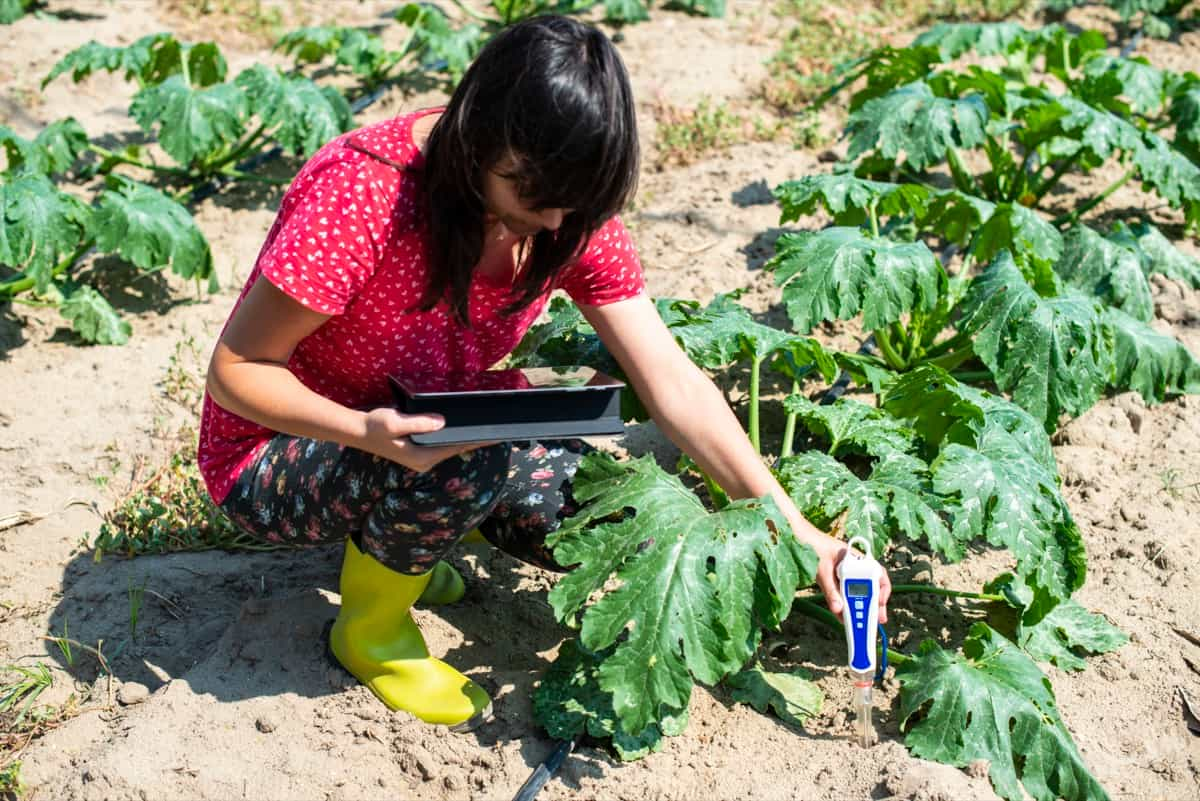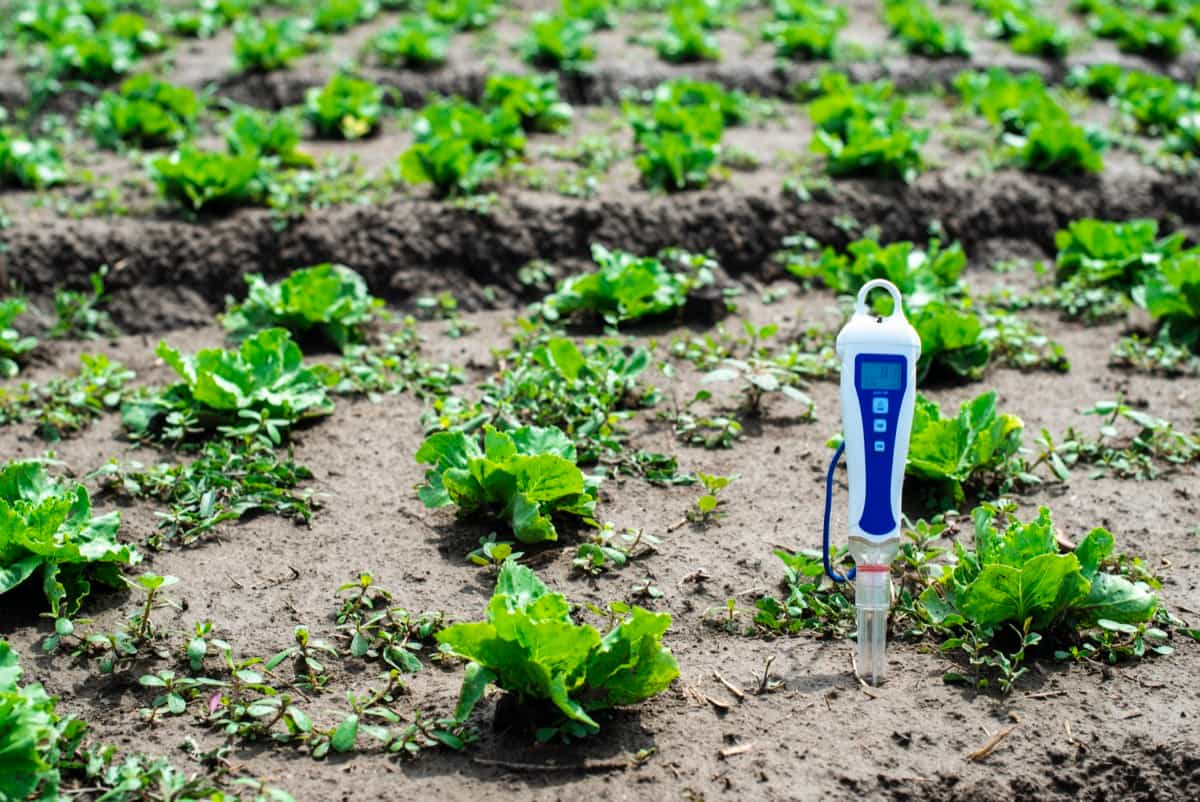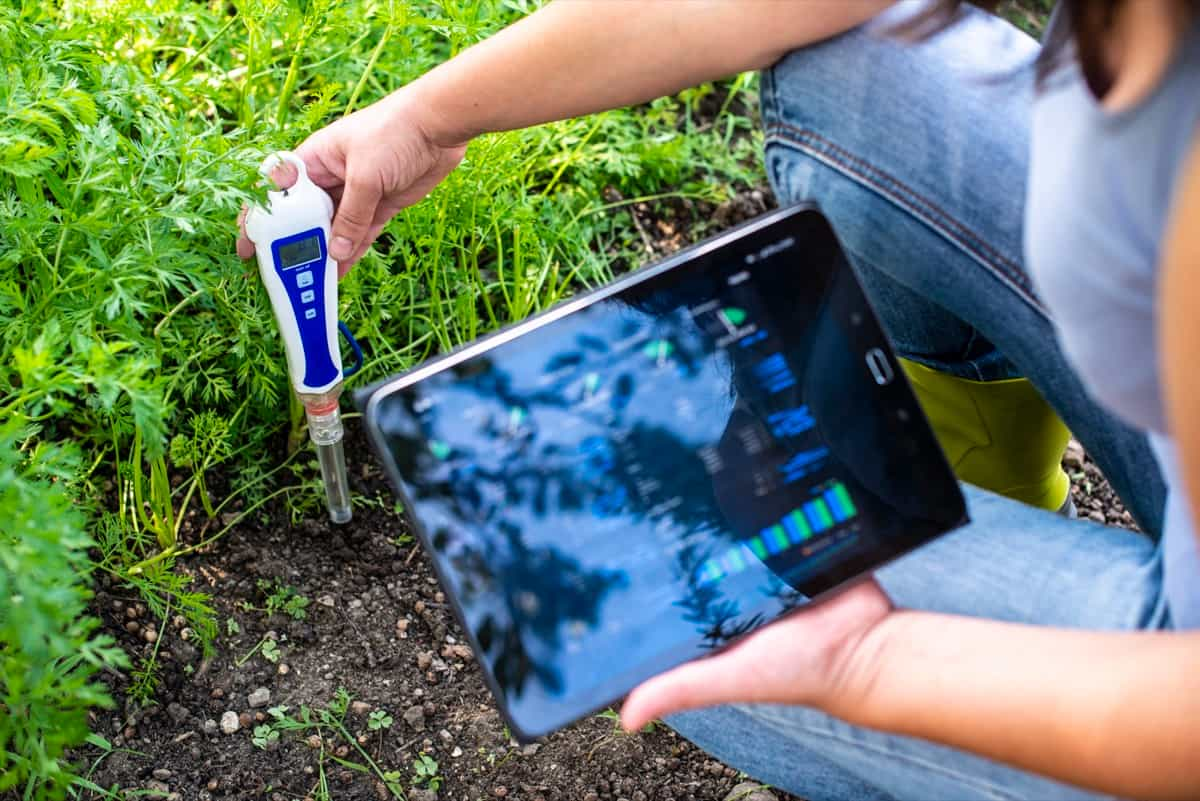Soil pH plays a key role in the health and productivity of your garden. It tells the availability of essential nutrients for plants and their ability to absorb them. Whether you’re dealing with acidic or alkaline soil, knowing how to adjust soil pH can make all the difference. Several factors influence soil pH, including parent material (the rocks and minerals from which it formed), climate, vegetation cover, and human activities such as agriculture or construction. Different regions have different naturally occurring levels of acidity or alkalinity.

How to Raise and Lower the Soil pH
Factors Affecting Soil pH: Exploring the Key Elements that Influence Soil Acidity or Alkalinity
| Parent Material | The composition of rocks and minerals in an area’s geological makeup can greatly affect soil pH. |
| Climate | Weather patterns play a role in influencing soil pH over time. Regions with high rainfall may experience leaching, which washes away basic nutrients and makes the soil more acidic. |
| Organic Matter | Decomposing plant material contributes to the formation of humus, which has a buffering effect on soil pH. |
| Water Source | Irrigation water quality can impact soil pH due to its mineral content. High dissolved salts can increase alkalinity, while rainwater tends to be more neutral. |
| Fertilizer Use | Some fertilizers contain chemicals that can alter soil pH over time if used excessively or improperly balanced for specific crops’ needs. |
| Plant Residues | Certain crop residues, such as pine needles (acidic)or wood ash(alkaline), can modify soil pH. |
Assessing Soil pH: Methods and Tools for Accurate pH Measurement in Different Soil Types
When it comes to understanding the health of your soil, assessing its pH level is crucial. After all, soil acidity or alkalinity can greatly impact plant growth and nutrient availability. One common method is using a pH test kit or meter. These handy tools allow you to collect and test a small soil sample for its acidic or alkaline properties. They provide quick and relatively accurate results, making them popular among gardeners.
In case you missed it: Trees and Shrubs Garden Soil pH Chart: Optimal Values for Different Trees and Shrubs

Another approach involves using litmus paper strips soaked in water mixed with your soil sample. You can estimate the approximate pH level by comparing the resulting color change against a color chart. It’s important to note that different soils may require slightly different measurement techniques due to their unique characteristics.
Raising Soil pH: Effective Techniques and Amendments for Increasing Soil Alkalinity
Maintaining the right soil pH is essential for healthy plant growth when gardening. If your soil is too acidic, you may need to raise its pH levels to make it more alkaline. One popular method is using agricultural lime, also known as calcium carbonate. This amendment raises the pH and adds valuable nutrients like calcium to the soil. Applying lime at recommended rates based on soil test results can gradually raise the pH over time.
Another option is wood ash, which contains high amounts of potassium, trace minerals, and alkaline properties. It’s important to note that wood ash should be used sparingly and mixed into the soil thoroughly since excessive use can lead to nutrient imbalances. Consider adding crushed eggshells to your garden beds if you prefer organic options. These natural sources of calcium carbonate slowly release alkalizing compounds into the soil while providing supplemental nutrients.
Lowering Soil pH: Strategies and Amendments for Acidifying Alkaline Soils
Regarding gardening, soil pH is one of the key factors that can greatly impact plant health. Some plants thrive in acidic soils, while others prefer alkaline conditions. One effective method for acidifying alkaline soils is applying elemental sulfur. This natural amendment reacts with water and bacteria in the soil, producing sulfuric acid, which helps lower pH levels gradually over time.
It’s important to note that sulfur takes time to break down and become available to plants, so patience is key when using this method. Another option for lowering soil pH is using peat moss or compost. These materials contain high levels of organic acids that can help neutralize alkalinity and bring acidity back into balance. Simply incorporate them into the top few inches of soil before planting or apply them as mulch around established plants.
Organic Approaches to Adjusting Soil pH: Natural Methods for Balancing Acidity or Alkalinity
When adjusting soil pH, organic approaches offer a natural and eco-friendly solution. One popular method for adjusting soil pH organically is using compost. Compost adds nutrients and helps regulate pH levels over time. Incorporating compost into your garden beds or mixing it with potting mix for container plants can help maintain a neutral pH.
Another organic approach is by using coffee grounds. You can use coffee grounds as a top dressing around acid-loving plants such as Azaleas, Blueberries, and Rhododendrons. Not only do they lower the pH levels in the soil, but they also act as a slow-release fertilizer.
Using Lime to Raise Soil pH: Understanding the Benefits, Types, and Application Rates
Lime is a commonly used amendment for raising soil pH levels. It offers numerous benefits for gardeners and farmers alike. By increasing soil alkalinity, lime helps create optimal conditions for plant growth and nutrient availability. When applying lime to your soil, it’s essential to determine the correct amount needed. This can be done through soil testing or following general guidelines based on your soil type.
In case you missed it: Vegetable Garden Soil pH Chart: Optimal Values for Different Vegetables

Typically, sandy soils require less lime than clay soils due to their differing buffering capacities. The application rate of lime depends on your desired increase in pH level. Adding 9000 to 18000 grams of agricultural or dolomite lime per 1,000 square feet will raise the pH by one unit. Remember that it’s important not to over-lime since excessive alkalinity can adversely affect certain plants.
Sulfur as an Acidifying Agent: Utilizing Elemental Sulfur to Lower Soil pH Levels
When adjusting soil pH, elemental sulfur is a valuable tool in the gardening arsenal. This natural amendment has been used for centuries to lower soil alkalinity and create optimal growing conditions for acid-loving plants. One of the benefits of using elemental sulfur is its slow-release nature. Unlike other quick-fix amendments, such as aluminum sulfate or iron sulfate, which can cause rapid fluctuations in pH levels and potentially harm plants, elemental sulfur provides a more gradual adjustment that allows for better nutrient uptake by plant roots.
It’s important to note that applying too much sulfur can adversely affect your garden. It’s always best to conduct a soil test beforehand and follow recommended application rates based on your specific needs. Remember, patience is key when working with elemental sulfur – it takes time to change pH levels. In addition to lowering soil pH, utilizing elemental sulfur offers secondary benefits. As it breaks down in the soil, it releases sulfates that can help enhance microbial activity and improve overall soil structure.
Amending with Peat Moss: Enhancing Soil Acidity for Acid-Loving Plants
If you’re a gardener who loves growing acid-loving plants like azaleas, blueberries, or rhododendrons, peat moss is your secret weapon to create an optimal soil environment. Peat moss has long been recognized as a natural amendment that can enhance soil acidity and provide the perfect conditions for these plant varieties to thrive. Mix peat moss as a soil amendment into the top few inches of your garden bed or planting hole.
The amount needed will depend on your specific soil type and desired pH level. It’s always best to start with small amounts and test the pH regularly until you reach the desired acidity. Not only does peat moss lower soil pH, but it also improves moisture retention and drainage in heavy clay soils. Its fibrous structure allows it to hold water while providing adequate airflow for plant roots.
Managing Soil pH in Container Gardening: Tips and Tricks for Maintaining Optimal pH Levels in Pots and Containers
| Choose the Right Potting Mix | Start with a high-quality potting mix specifically formulated for container gardening. These mixes often have a balanced pH level suitable for most plants. |
| Monitor Soil Moisture | Regularly check the moisture level of your container garden’s soil using a moisture meter or by feeling the soil with your finger. Overwatering can lead to leaching of nutrients, affecting pH levels. |
| Use Acid-Loving Plant Amendments | If you’re growing acid-loving varieties like Azaleas or Blueberries, incorporate organic ingredients like peat moss or pine needles into their potting mix. |
| Adjust with Organic Materials | Organic materials such as composted leaves, coffee grounds, or well-rotted manure can help maintain ideal pH levels over time without harsh fluctuations. |
In case you missed it: Flower Garden Soil pH Chart: Optimal Values for Different Flowers

The Importance of Soil pH in Plant Growth: How pH Levels Impact Nutrient Availability and Plant Health
| pH range | Nutrient availability | Plant health |
| Acidic Soil (pH < 6) | Nutrients like phosphorus, iron, and manganese become more available to plants. | However, excessive acidity can lead to aluminum and manganese toxicity, negatively affecting plant roots. |
| Neutral Soil (pH = 6-7) | Most nutrients are readily available to plants at this pH range. | This is considered the optimal pH level for most crops. |
| Alkaline Soil (pH > 7) | Nutrient deficiencies may occur as essential elements like iron, zinc, and copper become less available to plants. | High alkalinity can also cause nutrient imbalances that affect plant growth. |
Conclusion
Remember, maintaining the right soil pH is crucial for the health and vitality of your plants. Knowing the importance of soil pH and its impact on plant growth, you can take proactive steps to ensure optimal conditions. Whether you need to change your soil pH, natural and organic amendments can help you achieve the desired balance.
However, it’s important to note that adjusting soil pH is not a one-time fix. Regular monitoring and testing are essential to maintain an ideal range for your specific plants. Additionally, always remember that other factors such as drainage, nutrient levels, and organic matter content also play critical roles in creating an optimal growing environment.
- Feed Your Flock for Less: Top 10 Tips to Save on Chicken Feed
- Ultimate Guide to Ossabaw Island Hog: Breeding, Raising, Diet, and Care
- Hatching Answers: The Top 10 Reasons Your Chickens Aren’t Laying Eggs
- Eggs and Economics: Breaking Down the Cost of Raising Backyard Chickens
- Defend Your Greens: Proven Methods to Keep Iguanas Out of Your Garden
- Ultimate Guide to Cinnamon Queen Chicken: A Comprehensive Guide for Beginners
- Ultimate Guide to California Tan Chicken: Breeding, Raising, Diet, Egg-Production and Care
- Ultimate Guide to Marsh Daisy Chicken: Breeding, Raising, Diet, and Care
- 10 Types of Chicken Farming Businesses You Can Start for Profits